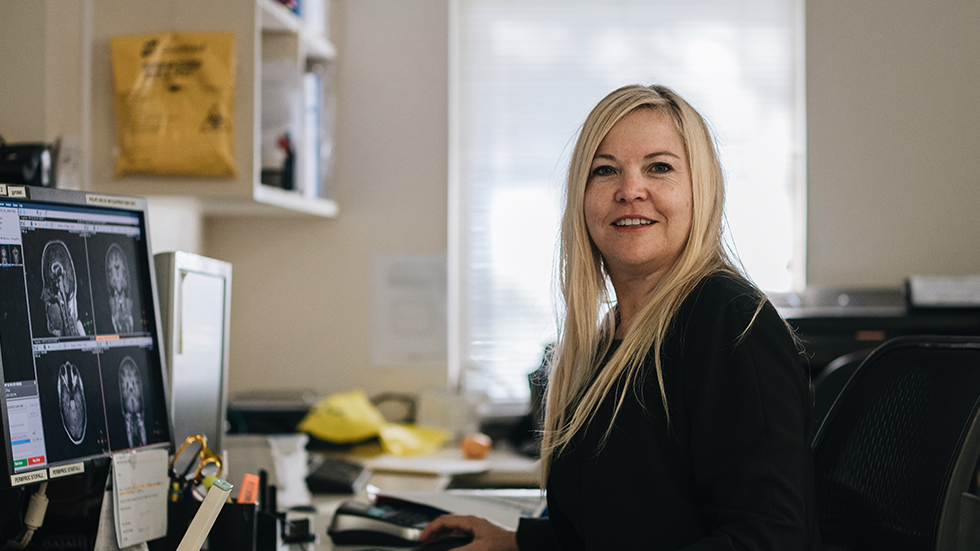Giving hope to those with spinal cord injuries

Researchers from Neuroscience Research Australia, the University of New South Wales, the University of Sydney, and HammondCare have found surviving sensory spinal nerve connections in 50 per cent of people living with complete thoracic spinal cord injuries.
The study, which is part of a decade-long collaboration between the researchers Wrigley, Siddall and Gustin, used cutting-edge functional MRI (fMRI) technology to record neural response to touch.
It was Dr Sylvia Gustin who analysed the fMRI images to identify the moment the patient’s brain registered the touch.
“Seeing the brain light up to touch shows that despite the complete injury to the thoracic spine, somatosensory pathways have been preserved.
“It’s fascinating that although the patients did not ‘feel’ the big toe stimulation in the experiment, we were able to detect a significant signal in response to the touch in the brain’s primary and secondary somatosensory cortices, the thalamus, and the cerebellum,” explained Dr Gustin.
For those living with a complete spinal cord injury this means, despite previously believing the communication to the brain had been severed in the injury, messages are still being received.
Dr Gustin describes this new category of spinal cord injury as ‘discomplete’.
“The current classification system is flawed. It only contains two types of spinal cord injury – complete and incomplete.
“It is important that we acknowledge that there is a third category – the ‘discomplete’ injury, only then we can provide better treatment regimens for the many sufferers of a complete spinal cord injury,” said Dr Gustin.
For those newly classified as ‘discomplete’, this discovery opens up new opportunities to identify those people living with a spinal cord injury that are more likely to benefit from treatments aimed at improving sensation and movement.
Because of this study, research participant James Stanley now knows he belongs to a new category.
“It is exciting to know that there is a connection there, that my toe is trying to say hello to my brain.
“If medical professionals can work to identify people like me with a ‘discomplete’ injury earlier, perhaps they can find new treatments and rehabilitation techniques.
“The thought that one day I might be able to feel the sand between my toes again, or the waves wash over my feet gives me hope. It’s something Dr Gustin’s discovery has made possible,” said Mr Stanley.
A new phase of this research program will study how to enhance these surviving sensory spinal nerve pathways with an intensive stimulation of the areas which represent touch in the brain to ultimately restore a perception of touch.
Together with Corey Shum and Associate Professor Zina Trost (University of Alabama, USA), Dr Gustin and her team is developing a novel approach of Virtual Reality Touch & Walking Intervention (VRTouchWalk) to enhance both the surviving sensory spinal nerve pathways and the touch signal in the brain in people with a discomplete spinal cord injury to finally restore the perception of touch.
Read more on this research in the Human Brain Mapping article.